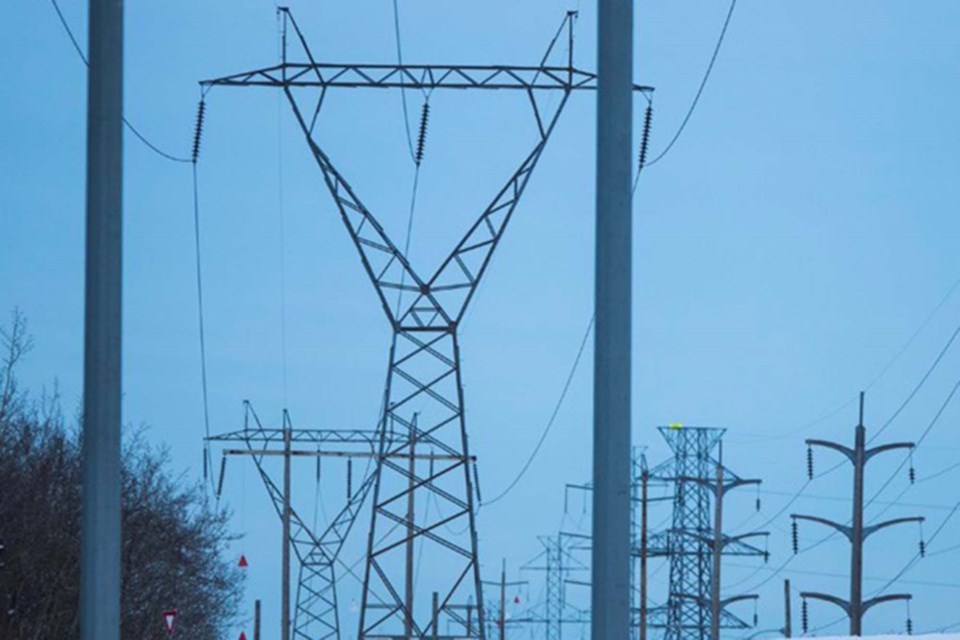A new document from a climate institute shows Alberta might be closer to a cleaner and greener electricity grid than previously predicted.
The Pembina Institute published a document responding to a report released by Alberta’s Electricity Service Operator (AESO), which predicts the province will need to see between $44 billion and $52 billion in capital investments to reach the net-zero targets set out by the federal government for 2035.
Kevin Dawson, AESO director of forecasting and analytics, presented the report to stakeholders earlier this month, saying there is a need for big investments to get the grid to net-zero, which will include meeting demand needs and getting the energy out to consumers.
The report explored three different electricity generation scenarios for the future, with different mixes between renewable generation, natural gas with carbon capture and storage, and hydrogen generation
It is possible for Alberta to achieve a net-zero supply by 2035, Dawson said, however there was significant risk found in each of the scenarios AESO considered.
“We really need almost perfect alignment of a number of factors in order to achieve a 2035 date,” Dawson said.
Nick Schumacher, clean energy and decarbonization analyst with the Pembina Institute, said modelling for reports trying to predict the future is incredibly complex and challenging.
“The modelling involved in a report like the one AESO did is complex, and some of the suggestions we have for them relate to some common challenges in this kind of modelling work,” Schumacher said.
The modelling put out by AESO is unique, Schumacher said, and marks a significant milestone for the path to net-zero electricity.
“We're pretty encouraged to see AESO doing this kind of work, and with so many of our climate goals we'll need an all-hands-on-deck approach to make net zero by 2035,” Schumacher said.
Overall, Schumacher said the report over-estimated the cost of renewable energy, such as wind and solar, while underestimating the costs of things such as carbon capture, utilization, and storage (CCUS), and the price of natural gas.
Schumacher said more attention needs to be paid to the volatility of natural gas prices, and the current price of natural gas is higher than the modelling used in the report.
Predicting lower prices for natural gas impacts the cost differences between the different scenarios presented by AESO, making natural gas options seem more affordable.
The modelling also predicts the lowest cost of future renewable energy to be more expensive than it currently is, Schumacher said.
“That doesn't even consider any potential innovation in wind over the next 13 years that could drive those costs down even further,” Schumacher said.
In addition, the modelling didn’t accurately consider the cost of CCUS, Schumacher said, because the report assumes the economics for thermal generation is supported by government funding, but the total government investment isn’t reflected in the final accounting of costs.
“It’s also assuming a political environment over the next decade supportive of (CCUS), which might not be the case,” Schumacher said.
The report could have also had a deeper look into interprovincial and regional sharing of power and what supply mix of electricity could look like if sharing power between the provinces was considered, Schumacher said,
"We appreciate that getting into potential transmission lines can be challenging from a regulatory construction timeline perspective, but we would like to see some further evidence that an interprovincial transmission line can support a broader decarbonization and electricity system," Schumacher said.
"Even if we can't get it done by 2035, we would still like to see some analysis of what it might look like beyond that."
Overall, Albertans have a reason to be optimistic about a greener energy grid in the future, Schumacher said, and the AESO report shows the province can get to net-zero by 2035.
"We would say that the plan is realistic, and I think the current market environment supports that. We've seen a ton of private investment in wind and solar in the last few years, so there's no real reason why that can't continue," Schumacher said.
"The report shows that we can get to net-zero by 2035, and we can do so without compromising reliability."
The AESO assessment comes months after the federal government laid out plans for the country to move to a net-zero electricity grid by 2035. At the time, Alberta’s associate minister of natural gas and electricity, Dale Nally, said he had zero confidence Alberta could achieve those climate targets by 2035, saying the federal plan was “unworkable."
"It is a child-like ambition,” Nally said in April.
After the AESO report was released, Nally sent out a statement reinforcing his position that a net-zero grid is not achievable and will cost Albertans tens of billions of dollars while also hurting energy reliability and affordability.
“The distribution system would also require further investment, not included in the $52-billion estimate, that will ultimately be borne by consumers. Any plan that means families and businesses cannot afford to heat their homes or keep their lights on is not realistic. Keeping energy reliable and affordable is critical for all Canadians," Nally said.



